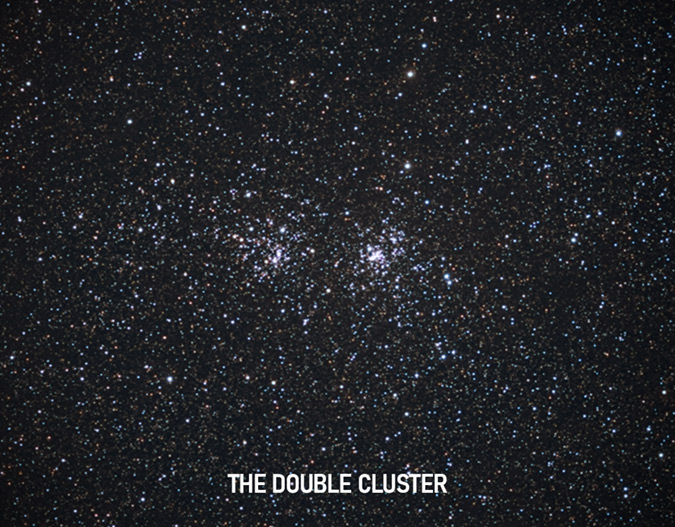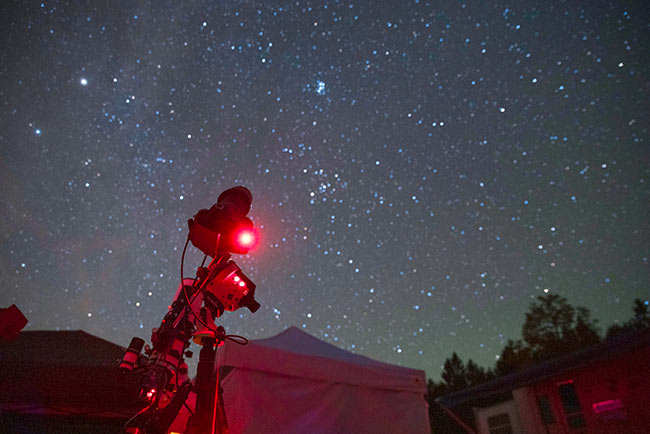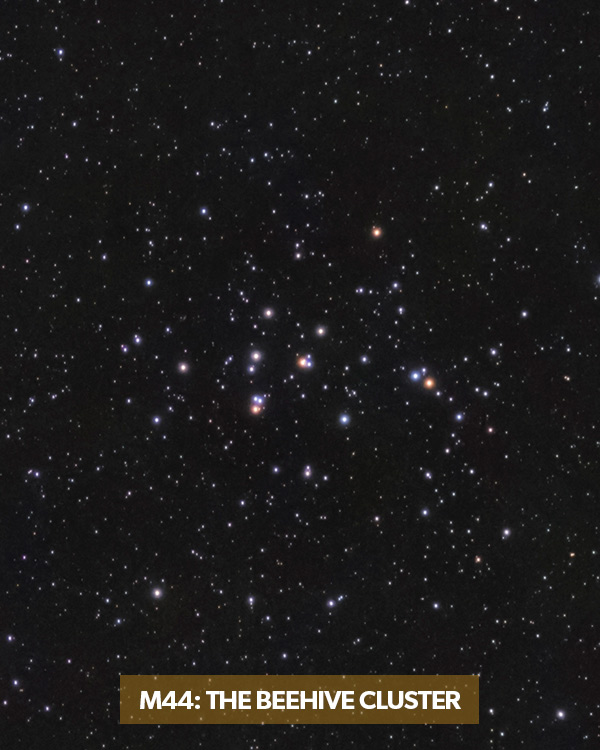What is an Open Star Cluster?
An open star cluster is a young bundle of stars, irregularly shaped and found in the galactic plane. They contain hundreds of stars unstably bound together, and they’re visible from earth.
The Pleiades (M45) is an example of an Open Cluster.
Open star clusters are small collections of young stars, irregular in shape and numerous in the Milky Way.
Formed in cosmic gas clouds that are still observable around some clusters, they survive for only a few hundred million years. They occupy areas of active star creation.
Observable from Earth with the naked eye, they appear as a fuzzy patch of light or a string of lights across the sky.
Spanning over 20 light-years across, they completely engulf a telescope’s field of view. Eleven thousand open star clusters reside in the Milky Way.
The Double Cluster in Perseus is a memorable sight through a telescope or binoculars.
Many of the most popular deep-space astrophotography targets include open star clusters. For example, the Lagoon Nebula includes an embedded open star cluster (NGC 6530) with hot stars that power the nebular glow.
The Eagle Nebula is another famous nebula with an embedded star cluster (NGC 6611). When observed through the eyepiece of a telescope, you are likely to notice the open cluster of stars before noticing the nebula itself.
How many Stars are in an Open Cluster?
A relatively small star aggregation, open clusters contain between a few hundred to a few thousand stars.
They form in giant molecular gas clouds, and their stars are roughly the same age. Astronomers study open clusters to understand the birth and death of stars.
The clusters are loosely bound, and the velocity needed to escape their gravity is weaker than the velocity of the stars it contains.
They survive a few orbits of the galaxy before their stars begin to diffuse away from the cosmic structure.
Open clusters inhabit irregular and spiral galaxies near the galactic plane, in areas of high gas density.
The Big Dipper is part of a drifting open cluster known as the Ursa Major Moving Cluster. At only 80 light-years from Earth, it’s a close celestial neighbor. Its sprawling pattern makes it a surprising cluster member.
What’s the Difference Between an Open Star Cluster and a Globular Cluster?
Globular clusters appear in the night sky as dense, symmetrical balls of light.
They contain millions of stars, some of which are 13 billion years old – almost as old as the universe itself. They reside in the star halo of spiral galaxies.
Unlike open clusters, the stars inside globular clusters aren’t formed together and can have differences in ages of millions to billions of years.
Due to their age, all star creation in globular clusters ceased millions of years ago.
Significantly larger than open clusters due to the multitude of stars they contain, they can span up to 300 light-years across.
They’re considerably rarer, with only 200 believed to be in the Milky Way.
Observing Open Star Clusters with a Telescope or Binoculars
Open star clusters are visible with the bare eye, making it easy to locate your target and direct your telescope and binoculars in the right direction.
The Pleiades Cluster (M45) is found inside the constellation Taurus and resembles a mini dipper. Once known as the ‘Seven Sisters’ due to its seven stars, only six remain visible due to their drifting.
The Pleiades star cluster can be seen in the upper center of this wide-angle image.
Also inside Taurus is the V-shaped Hyades Cluster, visible in the Northern hemispheres winter.
At 151 light-years away from us, it’s one of the nearest open clusters and contains 400 stars. The five stars creating the ‘V’ shape are visible from the earth, and hundreds more come into view through a telescope or binoculars.
The Beehive Cluster (M44) is at the center of the Cancer constellation. It spans over twice the size of the full moon and appears as a fuzzy patch of light.
A telescope or binoculars illuminates a world of stars, with over 200 located inside the cluster. At least three planets are known to orbit the stars inside the Beehive.
The Beehive Cluster (M44) in the constellation Cancer. Photo by Trevor Jones.
The Best Open Clusters to See Through a Telescope
Open clusters provide a satisfying view of space through almost any telescope. A telescope with a larger aperture (8-inches or more) will reveal fainter stars in the cluster, and help differentiate the types of stars in the cluster.
Observing these objects from a location that has not been spoiled by light pollution will reward you with a better view. The following list of star clusters are observable from the Northern Hemisphere.
Here are some fantastic open star clusters to observe through your telescope. If you need help locating the following open star clusters, I recommend using a stargazing app on your smartphone to guide you.
- Messier 7 in Scorpius
- Messier 11 in Scutum (Wild Duck Cluster)
- Messier 16 in Serpens (Eagle Nebula)
- Messier 34 in Perseus
- Messier 35 in Gemini
- Messier 37 in Auriga
- Messier 44 in Cancer (Beehive Cluster)
- Messier 45 in Taurus (Pleiades)
- The Double Cluster in Perseus (NGC 869 and 884)
- NGC 2360 in Canis Major (Caroline’s Cluster)
- NGC 2244 in Monoceros
- NGC 7510 in Cepheus
- NGC 7789 in Cassiopeia
For a complete list of open clusters, please see the following table on Wikipedia: List of Open Clusters.
Open Cluster NGC 2244 inside of the Rosette Nebula. Photo by Trevor Jones.




